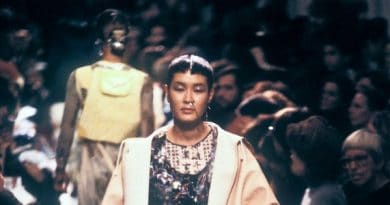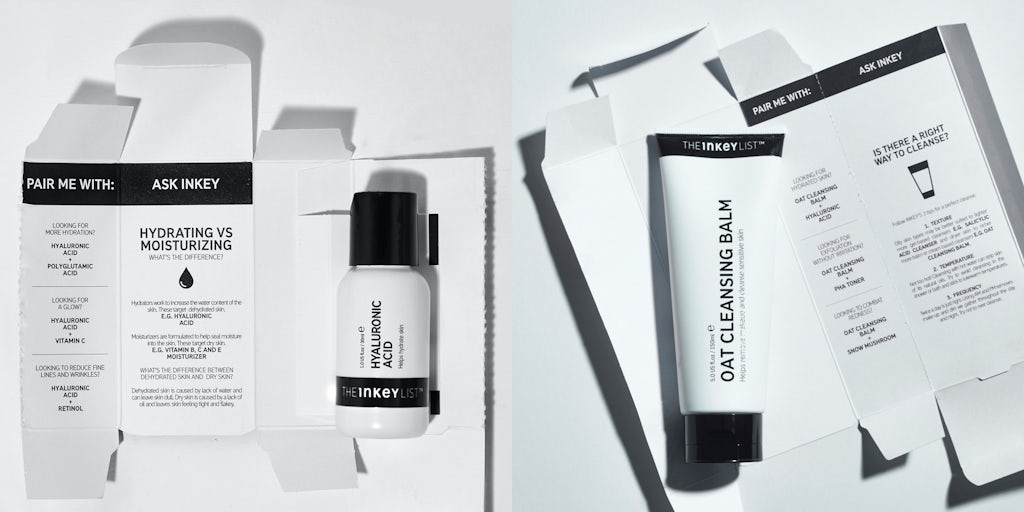The End of ‘Unfiltered’ TikTok
In the early days of TikTok, it felt like an enthusiastic 30-second review shot on an iPhone could make almost any beauty product go viral.
That unfiltered, off-the-cuff approach felt fresh and distinct from Instagram’s highly-curated aesthetic. Today, however, the lines between the two have blurred, as TikTok is saturated with expertly-produced ads, sponsored content from influencers and shoppable videos. For brands, the app has gone from an experimental side-project to a tentpole of their marketing strategies.
“It’s a different place than it was when we started,” said Michelle Miller, the SVP of global marketing at hair-care brand K18, which capitalised on TikTok early with success and is still investing heavily in marketing on the platform.
According to Nielsen, 49 percent of 475 billion views of content mentioning beauty brands was sponsored in the year ending March 24. K18′s is lower than the average with 35.1 percent. But this rate is even higher for some brands known for massive organic virality just three years ago — CeraVe mentions are now 80.9 percent paid, based on the data.
While it’s no surprise that more ads increase competition, TikTok’s growing monetisation has shifted culture on the app as well. Users have become much more skilled at spotting ads and calling out influencers when they believe they’ve spotted deceptive practices, meaning brands need to adapt their marketing strategies.
“As consumers become more familiar with the platform and more accustomed to the platform, it’s easy for them to spot ads faster, and they can understand that it’s an ad before they even see the ad disclosure,” said Rachel Lockett, the VP of marketing at MAC Cosmetics.
Those realities have changed the game for brands looking to use TikTok as a platform to connect with consumers.
‘Unfiltered’ Shifts to Pay-to-Play
In TikTok’s early days — roughly from its 2018 launch to 2022 — new mega-influencers were minted weekly as feeds filled with a chaotic content mix that wouldn’t have stood a chance on Instagram. Users could earn millions of followers practically overnight with videos in which they danced to hip-hop in sweatpants and zit stickers or made funny faces to songs. Beauty influencers, meanwhile, blew up not for selling perfection, but their willingness to share blunt takes on brands they liked — and didn’t.
“A big part of TikTok in the beginning was being more raw, being more unfiltered,” said Conor Begley, the chief strategy officer of influencer marketing firm CreatorIQ. “In a lot of ways, social platforms cater to generational preferences. … Gen Z was responding to how heavily filtered life was on Instagram. So it was kind of like, ‘I don’t want to be like my big sister; I don’t want to be like my mom.’”
As the beauty YouTuber scene became embroiled in drama and Instagram was associated with unrealistic aspiration, TikTokers managed to earn consumers’ trust when seeking out beauty product recommendations. Countless brands saw a viral sales explosion from organic content that struck the right chord with the algorithm.
Glossier’s You fragrance went viral in 2022 after a girl posted that it had inspired men to chase her down the street and write poetry about how nice she smelled. Peter Thomas Roth, meanwhile, saw a 30 percent overall year-over-year jump in sales in 2021 after a non-influencer demonstrated how quickly its FirmX Eye Tightener cream shrunk the bags under her eyes. The post earned 25 million views in the first week and sparked a deluge of influencer content about the cream, which sold out quickly and saw a 1,000 percent year-over-year sales spike.
At the time, Peter Thomas Roth spent less than 5 percent of its marketing budget on TikTok. Now, the platform takes up a third. But it’s hard to recreate the magic of the early days.
“It’s very saturated, and I think it is challenging to get the authenticity of content, and we’re seeing that all the time,” said Sarah McNamara, CMO and EVP at Peter Thomas Roth. “All brands are seeing that because there’s so many people on the platform trying to create content in more of an advertising-type, promotional way, versus really more of that authentic-type content.”
Advertising and sponsored content were available early on, but those that were the quickest to take advantage of it, such as E.l.f. Beauty and K18, saw their efforts pay off.
“It was pivotal because that was a space where the creator economy was booming — it still is — and there wasn’t a lot of competition,” said Miller, adding that it was “similar to Instagram in the early days.” Launched in 2020, K18 quickly started running campaigns such as sponsored hashtag challenges in 2021, earning up to 12 billion views for one campaign.
TikTok’s growing commercialisation has also changed the game for influencers themselves, too. A growing number of influencers have generated backlash on TikTok for failing to disclose sponsored content. In April 2024, for example, honey brand called Bee Better accused influencer Haley Kalil of not disclosing sponsorship from Kiehl’s in a post that received 8.8 million views and over half a million likes. In February 2023, TikTok ran rampant with accusations that influencer Mikayla Nogueira was wearing false eyelashes in a sponsored post for mascara, a scandal that has since been dubbed “mascaragate.”
TikTok content, too, has more polish than it did four years ago. Miller noted that K18 recently saw its AirWash Dry Shampoo sell out in April after it-girl Alix Earle created “messy” sponsored content for the brand that featured her using the product after partying and not washing her hair. Still, the video was a far-cry from a poorly lit phone-shot candid.
“You have creators now that have resources like Alix Earle. You can tell their content is perfectly lit, perfectly situated, and that is also doing really well,” said Miller.
Adapting and Evolving
TikTok is still a crucial sales driver, according to brands. But strategies have shifted.
“It’s the natural evolution of any of any platform. You have to roll with the punches and figure out what makes sense for your brand,” said Lockett. While MAC used to invest more in traditional advertising on TikTok, it is now focusing on the Spark program that allows brands to boost top-performing organic posts. She said the ads the brand runs these days are almost entirely boosted creator ads, which feel more “authentic and organic.”
Brands are also leaning fully into commercialisation through TikTok Shop, which features a wide range of official brands’ shops such as Rare Beauty and Estée Lauder.
“TikTok as a sales channel is in the early stages of growth, but if they are allowed to continue, it will be a significant player at some point,” predicted McNamara. Peter Thomas Roth recently launched its TikTok Shop and plans to lean further into shoppable content. Experts note that it will be up to brands and TikTok to make sure they maintain the right balance of sponsored and organic content to keep users’ interest, especially as shopping posts increase.
If the TikTok ban goes through, marketers predicted that platforms such as YouTube and Instagram would fill the void.
“Instagram’s becoming less curated and more short-form video focused,” said Miller. “We would follow the creators, and figure out what they are doing, because that’s really what led us to TikTok in the first place.”



